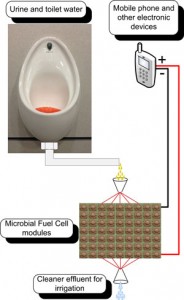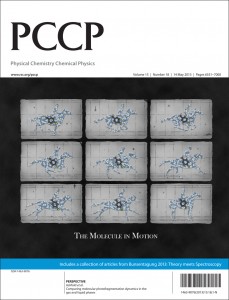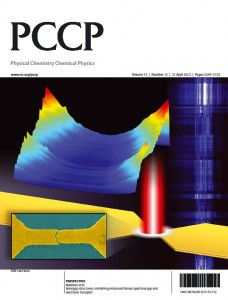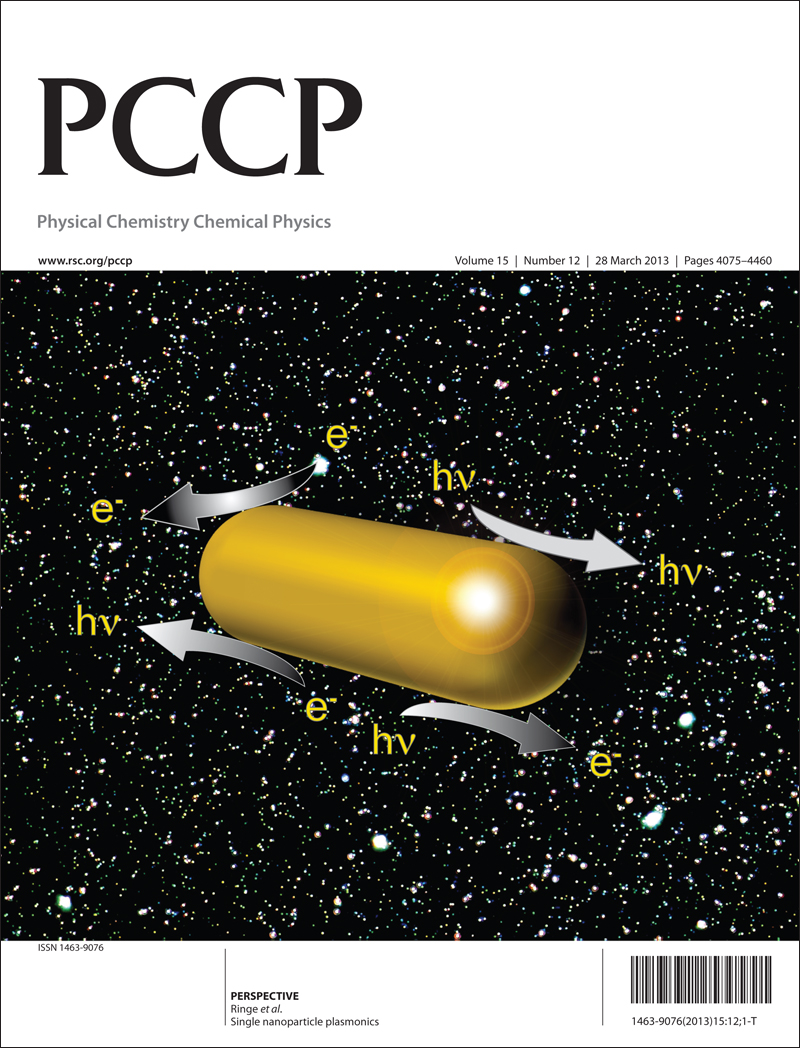The following articles in PCCP were the top 25 most accessed from April – June:
Plasmonic photocatalysts: harvesting visible light with noble metal nanoparticles
Peng Wang, Baibiao Huang, Ying Dai and Myung-Hwan Whangbo
Phys. Chem. Chem. Phys., 2012,14, 9813-9825
DOI: 10.1039/C2CP40823F
Effect of multilayer structure on cyclic performance of Si/Fe anode electrode in Lithium-ion secondary batteries
Hee-Kook Kang, Seong-Rae Lee, Won Il Cho and Byung Won Cho
Phys. Chem. Chem. Phys., 2013,15, 1569-1577
DOI: 10.1039/C2CP42824E
Octahedral Co3O4 particles threaded by carbon nanotube arrays as integrated structure anodes for lithium ion batteries
Guangmin Zhou, Lu Li, Qiang Zhang, Na Li and Feng Li
Phys. Chem. Chem. Phys., 2013,15, 5582-5587
DOI: 10.1039/C3CP50221J
Oxygen vacancy formation in CeO2 and Ce1-x Zr x O2 solid solutions: electron localization, electrostatic potential and structural relaxation
Hai-Feng Wang, Hui-Ying Li, Xue-Qing Gong, Yang-Long Guo, Guan-Zhong Lu and P. Hu
Phys. Chem. Chem. Phys., 2012,14, 16521-16535
DOI: 10.1039/C2CP42220D
MnFe2O4–graphene nanocomposites with enhanced performances as anode materials for Li-ion batteries
Yinglin Xiao, Jiantao Zai, Liqi Tao, Bo Li, Qianyan Han, Chao Yu and Xuefeng Qian
Phys. Chem. Chem. Phys., 2013,15, 3939-3945 D
DOI: 10.1039/C3CP50220A
Double layer, diluent and anode effects upon the electrodeposition of aluminium from chloroaluminate based ionic liquids
Andrew P. Abbott, Fulian Qiu, Hadi M. A. Abood, M. Rostom Ali and Karl S. Ryder
Phys. Chem. Chem. Phys., 2010,12, 1862-1872
DOI: 10.1039/B917351J
Hydrothermal carbon-based nanostructured hollow spheres as electrode materials for high-power lithium–sulfur batteries
Nicolas Brun, Ken Sakaushi, Linghui Yu, Lars Giebeler, Jürgen Eckert and Magdalena M. Titirici
Phys. Chem. Chem. Phys., 2013,15, 6080-6087
DOI: 10.1039/C3CP50653C
Single nanoparticle plasmonics
Emilie Ringe, Bhavya Sharma, Anne-Isabelle Henry, Laurence D. Marks and Richard P. Van Duyne
Phys. Chem. Chem. Phys., 2013,15, 4110-4129
DOI: 10.1039/C3CP44574G
On the different roles of anions and cations in the solvation of enzymes in ionic liquids
Marco Klähn, Geraldine S. Lim, Abirami Seduraman and Ping Wu
Phys. Chem. Chem. Phys., 2011,13, 1649-1662
DOI: 10.1039/C0CP01509A
Role of aromatic residues in amyloid fibril formation of human calcitonin by solid-state 13C NMR and molecular dynamics simulation
Hikari Itoh-Watanabe, Miya Kamihira-Ishijima, Namsrai Javkhlantugs, Ryozo Inoue, Yuki Itoh, Hiroshi Endo, Satoru Tuzi, Hazime Saitô, Kazuyoshi Ueda and Akira Naito
Phys. Chem. Chem. Phys., 2013,15, 8890-8901
DOI: 10.1039/C3CP44544E
Titania supported gold nanoparticles as photocatalyst
Ana Primo, Avelino Corma and Hermenegildo García
Phys. Chem. Chem. Phys., 2011,13, 886-910
DOI: 10.1039/C0CP00917B
Air and water stable ionic liquids in physical chemistry
Frank Endres and Sherif Zein El Abedin
Phys. Chem. Chem. Phys., 2006,8, 2101-2116
DOI: 10.1039/B600519P
Medical applications of surface-enhanced Raman scattering
Wei Xie and Sebastian Schlücker
Phys. Chem. Chem. Phys., 2013,15, 5329-5344
DOI: 10.1039/C3CP43858A
Plasmon enhanced spectroscopy
Ricardo F. Aroca
Phys. Chem. Chem. Phys., 2013,15, 5355-5363
DOI: 10.1039/C3CP44103B
High electrochemical performance based on ultrathin porous CuO nanobelts grown on Cu substrate as integrated electrode
Xiaojun Zhang, Liutao Yu, Lingling Wang, Rong Ji, Guangfeng Wang and Baoyou Geng
Phys. Chem. Chem. Phys., 2013,15, 521-525
DOI: 10.1039/C2CP43501B
Theoretical modelling of the low quantum yield observed in an Eu(III) triple helical complex with a tridentate aromatic ligand
F. R. Gonçalves e Silva, R. Longo, O. L. Malta, C. Piguet and J.-C. G. Bünzli
Phys. Chem. Chem. Phys., 2000,2, 5400-5403
DOI: 10.1039/B005624N
Density functional theory for transition metals and transition metal chemistry
Christopher J. Cramer and Donald G. Truhlar
Phys. Chem. Chem. Phys., 2009,11, 10757-10816
DOI: 10.1039/B907148B
Characterization of nanostructured hybrid and organic solar cells by impedance spectroscopy
Francisco Fabregat-Santiago, Germà Garcia-Belmonte, Iván Mora-Seró and Juan Bisquert
Phys. Chem. Chem. Phys., 2011,13, 9083-9118
DOI: 10.1039/C0CP02249G
Towards low-cost flexible substrates for nanoplasmonic sensing
Lakshminarayana Polavarapu and Luis M. Liz-Marzán
Phys. Chem. Chem. Phys., 2013,15, 5288-5300
DOI: 10.1039/C2CP43642F
Layer-by-layer assembly as a versatile bottom-up nanofabrication technique for exploratory research and realistic application
Katsuhiko Ariga, Jonathan P. Hill and Qingmin Ji
Phys. Chem. Chem. Phys., 2007,9, 2319-2340
DOI: 10.1039/B700410A
Enhanced photocatalytic activity and structural stability by hybridizing Ag3PO4 nanospheres with graphene oxide sheets
Qinghua Liang, Yao Shi, Wangjing Ma, Zhi Li and Xinmin Yang
Phys. Chem. Chem. Phys., 2012,14, 15657-15665
DOI: 10.1039/C2CP42465G
SERS reveals the specific interaction of silver and gold nanoparticles with hemoglobin and red blood cell components
Daniela Drescher, Tina Büchner, Don McNaughton and Janina Kneipp
Phys. Chem. Chem. Phys., 2013,15, 5364-5373
DOI: 10.1039/C3CP43883J
We hope you enjoyed reading the articles – please sign up for the free PCCP table of contents e-alerts to make sure you keep up to date with the latest research being published in the journal
On behalf of the Editorial Board of PCCP, we invite you to submit your best research to us today!
 The first mobile phone battery to be directly charged by microbial fuel cells feeding on neat urine has been reported by scientists in the UK.
The first mobile phone battery to be directly charged by microbial fuel cells feeding on neat urine has been reported by scientists in the UK.










 The
The 


